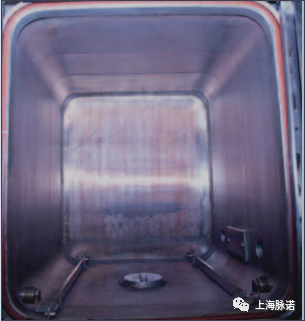Each of the aforementioned points of contact approaches the issue of discolouration / (undesired) film on the stainless steel surfaces selectively, from its own individual, subjective perspective, and may then reply that its system or product is working flawlessly, and is therefore not responsible for causing the discolourations. From an operator's point of view, this approach is usually not very helpful for the problem analysis that needs to be performed, nor is it conducive to effectively resolving the problem. When analysing the root cause, it is important to first check the quality of the water being supplied to the devices, as well as the composition of the condensate from the sterilizing steam. In addition, a chemical-physical analysis of swab/abrasion samples taken by a specialist from the discolourations on the affected stainless steel surfaces is recommended. The interpretation of the results from this analysis will allow initial conclusions to be drawn about the sources and causes of the film. However, it is entirely possible that, even if all of the necessary media-supply parameters are complied with, permanent films/ discolourations can appear on the interior surfaces of sterilizer chambers. This brochure provides basic and supplementary tips and information about the potential causes of surface discolourations, as well as recommendations for dealing these typically bothersome phenomena. The illustrations and figures accompanying the text help to ensure that the entire scope of the problem, including all of the related factors, is covered. Particular attention has been given to explaining the topic of steam sterilization and how potential causes of dis- colouration can occur in this context. At this junction it should be noted that, as what is referred to as form of uniform corrosion, these films/discolourations on stainless steel surfaces can also be caused by a host of other extremely diverse influencing factors aside from the rouging effect described in this brochure. Discolourations and corrosion-related alterations in the surface of noncorrosive stainless steel alloys can, for example, have the following known causes:
➡ Inadequate quality of water or steam
➡Chamber surfaces that were not manufactured properly and/or in conformity with standards
➡ Unsatisfactory alloy quality
➡ Application of unsuitable methods for working stainless steel surfaces
➡ Unsuitable manufacturing techniques used in producing the chamber
➡ Unsuitable substances in the sterilization materials
➡ Introduction or carry-over of chemicals into the chamber
➡ Chemical indicators or stickers
➡ Chemical attacks on the chamber or loading trolleys, e.g. through the use of chemicals not suitable for cleaning
➡ Secondary processes posing corrosion risks (e.g. fretting corrosion, pitting,contact corrosion, etc.)
In each specific case, other factors may also come into consideration as a potential cause.
来自:德国的钱伯斯工作组(德语缩写:AKK)的手册






